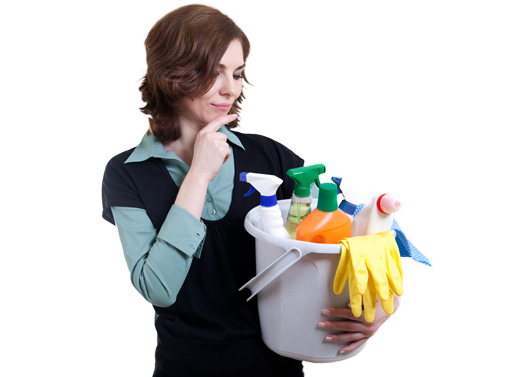Enhancing Health through Superior Air Quality in Your Living Spaces
Posted on 25/09/2025
Enhancing Health through Superior Air Quality in Your Living Spaces
The quality of the air in our homes significantly affects our overall well-being. With people spending more time indoors than ever before, indoor air quality has become a crucial factor in maintaining physical and mental health. This comprehensive guide explores the profound health impacts of superior air quality, practical strategies for improvement, and the latest innovations for healthier living spaces.
Understanding Indoor Air Quality
Indoor air quality refers to the level of pollution present in the air inside buildings and structures, particularly as it relates to the health and comfort of occupants. Unlike outdoor air, which is subject to environmental regulations and natural filtration, indoor environments can trap pollutants, allergens, and toxins, leading to potential health hazards.
What Influences Air Quality in Living Spaces?
- Ventilation: Proper air exchange is essential to dilute and remove pollutants from indoor spaces.
- Sources of Contamination: Common sources include cleaning agents, tobacco smoke, building materials, mold, and pet dander.
- Humidity Levels: High or low humidity can worsen air quality by promoting mold growth or increasing exposure to airborne particles.
- Outdoor Air Quality: Pollution from outside can infiltrate your home, impacting indoor air purity.

Why Superior Air Quality Matters for Health
Maintaining superior air quality in your living spaces goes beyond just comfort--it's fundamental for good health.
Poor indoor air can exacerbate a variety of health problems, including allergies, asthma, and respiratory infections. Persistent exposure to indoor pollutants has also been linked to headaches, fatigue, cardiovascular diseases, and even impaired cognitive function.
Short-term vs. Long-term Health Effects
- Short-term effects: Irritation of the eyes, nose, and throat, coughing, headaches, dizziness, and fatigue.
- Long-term effects: Chronic respiratory diseases, heart disease, cancer, and long-lasting problems with lung function.
Vulnerable Groups
Certain individuals are more affected by indoor air pollution, such as:
- Children and Infants - Developing lungs are sensitive to air pollutants.
- Older Adults - Age-related conditions make them more susceptible.
- People with Chronic Illnesses - Those with asthma, cardiovascular disease, or weakened immune systems.
Common Indoor Pollutants and Their Sources
To achieve enhanced air quality in your home, it's vital to identify and address the most prevalent sources of indoor pollution:
- Volatile Organic Compounds (VOCs): Emitted from paints, varnishes, cleaning supplies, air fresheners, and synthetic furniture
- Particulate Matter (PM): Minute solid or liquid particles like dust, pollen, pet dander, and smoke
- Biological Pollutants: Mold, bacteria, viruses, and dust mites thriving in moist environments
- Carbon Monoxide (CO): From gas appliances, fireplaces, and vehicles
- Radon Gas: Naturally occurring radioactive gas seeping from earth into foundations
How Do Indoor Pollutants Enter Living Spaces?
Indoor air contaminants often originate from inside the home itself, but can also make their way in from outdoors. Common pathways include:
- Poorly sealed windows and doors
- HVAC systems lacking regular maintenance
- Off-gassing from newly installed carpets or furniture
- Daily household activities such as cooking and cleaning
The Benefits of Enhancing Air Quality in Your Living Spaces
- Reduced risk of respiratory illnesses
- Improved sleep quality
- Sharper mental focus and cognitive function
- Stronger immune system
- Greater comfort and well-being
Studies have shown that enhancing air quality can dramatically reduce absenteeism from work and school, improve overall happiness, and decrease medical costs.
Proven Strategies for Achieving Superior Air Quality at Home
1. Improve Ventilation
- Open windows and doors when outdoor air quality is good
- Install exhaust fans in kitchens and bathrooms
- Utilize whole-house ventilation systems to ensure fresh air circulation
2. Use Air Purifiers
Air purifiers are highly effective for removing airborne contaminants such as dust, pollen, and smoke. Look for devices with HEPA filters and activated carbon layers for the best results.
3. Control Humidity
- Maintain indoor humidity levels between 30% and 50%
- Use dehumidifiers in damp areas like basements
- Fix leaks and water damage promptly to prevent mold growth
4. Keep Your Home Clean
- Vacuum regularly with machines equipped with HEPA filters
- Dust surfaces with damp microfiber cloths
- Avoid clutter that can collect dust and allergens
- Wash bed linens and curtains frequently
5. Limit Chemical Pollutants
- Opt for green cleaning products and natural air fresheners
- Avoid excessive use of pesticides indoors
- Choose low-VOC paints and finishes when remodeling
6. Bring Nature Indoors with Houseplants
Certain indoor plants such as peace lilies, spider plants, and snake plants can act as natural air filters, removing toxins and improving oxygen levels. Remember not to over-water, as excess moisture can lead to mold.
7. Regular Maintenance of HVAC Systems
- Change air filters every 1-3 months
- Schedule professional duct cleaning every few years
- Have heating and cooling systems inspected annually
Innovative Technologies for Healthier Air
Advancements in smart home technology offer new ways to monitor and enhance home air quality:
- Smart Air Quality Monitors: Devices that track pollutant levels and humidity in real-time, sending alerts to your smartphone.
- UV-C Air Sanitizers: Systems that use ultraviolet light to destroy bacteria, viruses, and mold spores inside HVAC units.
- Advanced Air Purifiers: HEPA and activated carbon filtration, plus ionizer features to neutralize smoke and odors.
- Ventilation Automation: Smart thermostats and sensors optimize the balance between fresh outdoor air and energy efficiency.
Addressing Common Myths about Air Quality
Myth 1: "Indoor air is always cleaner than outdoor air."
Truth: In many cases, indoor air can be up to five times more polluted than outdoor air, mainly due to trapped contaminants and lack of ventilation.
Myth 2: "A clean-smelling home means clean air."
Many commercial air fresheners only mask odors and may release additional chemicals, rather than improving air purity.
Myth 3: "If I don't have allergies, poor air quality doesn't affect me."
Even those without allergies can suffer from headaches, fatigue, skin irritation, or more serious long-term health effects due to exposure to indoor air pollutants.
How to Monitor Air Quality in Your Home
- Install air quality monitors to measure levels of particulate matter, VOCs, carbon monoxide, and humidity.
- Be alert to symptoms like sneezing, coughing, dry eyes, or unusual smells as signs of declining air quality.
- Test for radon and carbon monoxide with specialized detectors.
- Schedule annual professional assessments for a thorough evaluation of your home's air quality.
Creating an Action Plan for Enhanced Air Quality
- Assess your current situation: Identify sources of pollution and problem areas.
- Set clear goals: Improve ventilation, reduce chemical use, and maintain a regular cleaning schedule.
- Invest in proven technologies: Such as HEPA filters and smart air quality monitors.
- Monitor regularly: Keep track of improvements and adjust your strategy as needed.
- Educate your family: Share the importance of good air quality and encourage healthy habits.

Expert Tips for Maintaining Superior Air Quality Year-Round
- Use welcome mats and establish a no-shoes policy to reduce bringing in outdoor contaminants.
- Minimize the use of candles and wood-burning fireplaces.
- Store chemicals and solvents outside of living spaces, such as in a garage or shed.
- Encourage hand washing and good personal hygiene to minimize biological contaminants.
- Stay updated on outdoor air quality forecasts, and close windows when pollution is high.
Conclusion: Breathe Easy with Enhanced Health and Air Quality
Enhancing health through superior air quality in your living spaces is one of the most significant investments you can make in your wellbeing. By taking concrete steps--improving ventilation, using effective air filtration technologies, keeping a clean environment, and minimizing chemical exposures--you can create a sanctuary that supports both physical and mental health.
Remember, achieving cleaner indoor air is not a one-time effort but a continuous process. Keep learning about the best practices, leverage modern technologies, and involve your family in making healthier choices for the long run. Your home's air quality is a foundation for health--make it a priority, and let every breath bring you closer to your best self!




